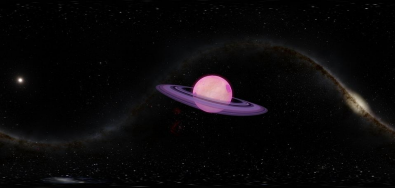Sreedevi Deepu of Grade 4F invented an imaginary planet in the milky way galaxy during the innovation week held in school.

Where is it?
It is 264 light years from Earth. It is very far and can be seen only with a telescope.
What’s the size of Xoletopile?
Xoletopile is very big. Xoletopile is the fourth largest planet in the Milky Way. You can fit 1,456 Earth inside it.
Fun facts
Xoletopile is the only planet that has rings in different angles. It also has a purple atmosphere due to purple pigment.
Is Xoletopile a gas giant or a terrestrial planet?
It is a terrestrial planet which means it has a solid surface.
Xoletopile’s satellite
Xoletopiles has three satellites. The first satellite’s name is Pinkal because it is pink. The next satellite's name is Magantani because it is magenta in colour. The next satellite's name is Egulorer because it is shaped like an egg.
Which star is Xoletopile’s parent star?
Xoletopile's parent star is a red dwarf called G4-Xole.
Is it habitable?
It is not in the habitable zone as it is far from the red dwarf. All the water is frozen in the ground due to its cold core with the temperature of - 265 degree celsius.
Fun Fact 2
It has a huge hole which extends to its core.Its so large we could see with our naked eye.
Color of Xoleletopile
It is mostly purple due to its purple pigment. It is a mystery as to why it is purple. It also has a pink pigment. No one knows so far as to why such colors are forming on this planet.
Is there oxygen on this planet so life will form?
The planet's atmosphere is mostly nitrogen with only 15.23 % of oxygen just like on Earth. There could be some species like Griffendevi which could survive such low temperatures on this planet.
Can anything survive on this planet?
Griffendevi could survive on this planet because of its special features. Some other things could also survive on this planet like bacteria.
More thing you need to know about Xoetopile
Xoletopile is moving away from its parent star because of constant hits by asteroids and comets. I hope to take a mission to this planet in the year of 2060 when we get better equipment that would help us travel deeper into the milky way galaxy.
By:- Sreedevi Deepu
Student of Grade 4-F




.png)
